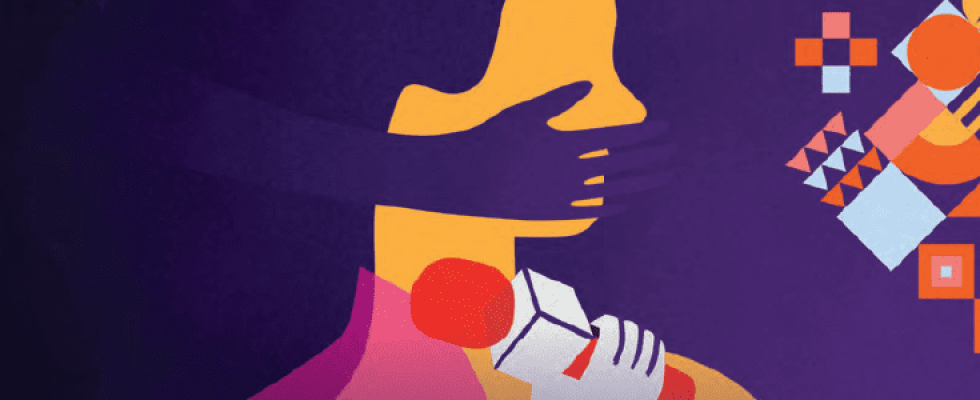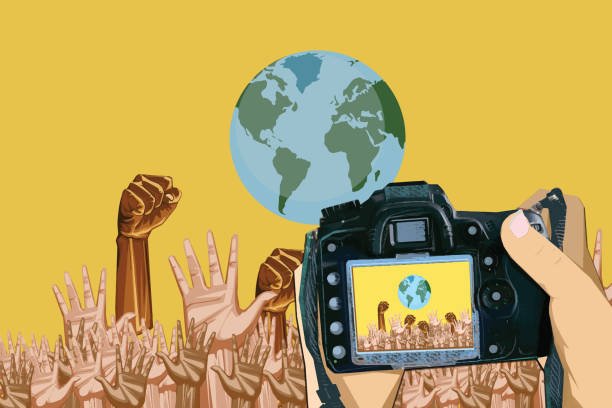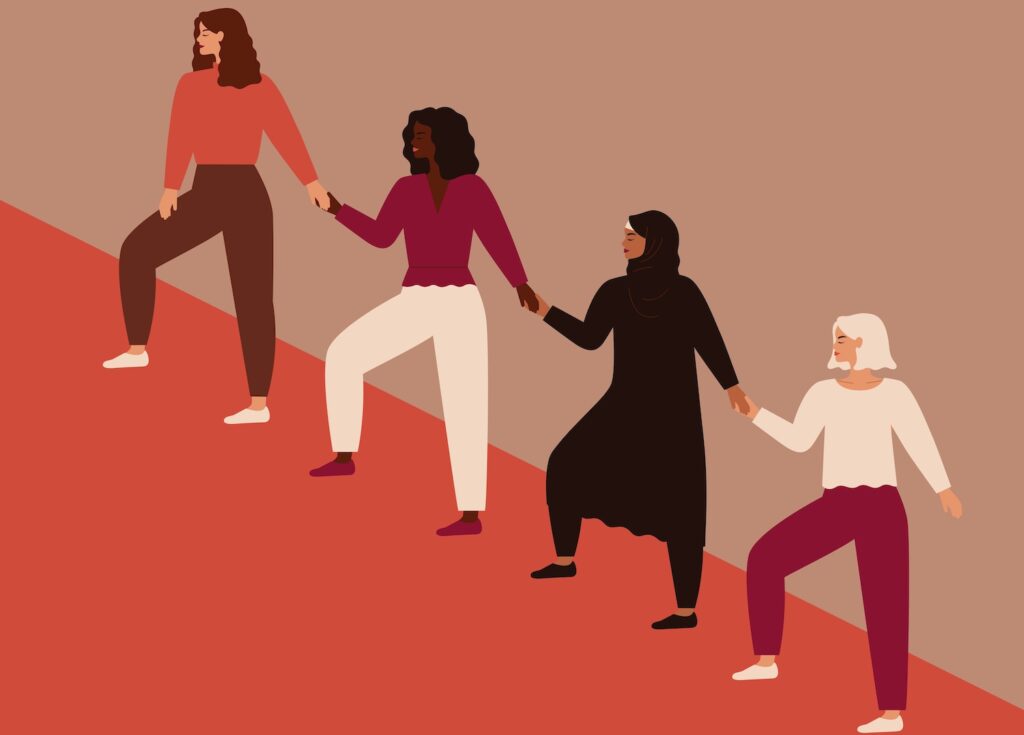Editor’s Note: FII’s #MoodOfTheMonth for January 2023 is Gender And Journalism. We invite submissions on this theme throughout the month. If you would like to contribute, kindly refer to our submission guidelines and email your articles to shahinda@feminisminindia.com
In 2021, Studies by the World Economic Forum revealed why the participation of diverse communities matters. The studies suggested how failure to provide adequate representation in media leads to dissociation along with a lack of trust among media consumers. Audiences usually sufficiently believe voices when they come from people’s lived experiences. This makes the media content more authentic and inclusive of voices across the masses in society.
In the previous year, a lot of incidents happened. However, of course, only some stories managed to remain in the headlines until even the last month of the year. Most of them revolved around communal or religious issues. Among them was the murder of Shraddha Walker. Even today this case is getting extensive coverage from sensational headlines to repetitive news flashes. These stories lack relevant information regarding the crime due to insensitive reportage. Most of the stories you will find are reported by men. Those men lack a sense of empathy towards the victim and their family. However, some may say that even women journalists aren’t doing any better.
Also Read: War On Love: Rising Right Wing Narrative On Love Jihad In New India
But in order to understand why this all happens, we need to understand the manner in which the newsrooms function. We need to look at the data and find how many women have the power to shape the narrative by covering relevant stories. What if she is in a newsroom dominated by metropolitan men? How would we ensure that the subject of the stories she covers will get equal coverage? Who will ensure that she gets to cover stories that she can cover better, because of her own lived experiences in that arena?
A sensitive approach towards stories matter
For instance, a joint report released in 2022 by Oxfam and Newslaundery on the Representation of Marginalised Sections in the news media, reveals how Dalit Trans journalists face subtle nature of discrimination at their workplaces in media. The report suggests how some reporters from marginalised sections were hardly allowed to cover any popular stories. This makes us realise that top management in the newsrooms still fails to understand how people’s own lived experiences help them to cover issues of their community with greater sensitivity.

This sensitivity lacks when we perform a content analysis of reportage of cases like that of Shraddha Walker or the 2020 Hathras Gang Rape Case. One became sensational, the other lacked enough coverage. The former easily makes a cut to the newsdesks, thanks to the maximum ratings this kind of sensational reportage, receives. As a result, they give viewers a ‘what next’ anxiety investing them into the story.
Also Read: Shraddha Walkar Murder: Is Media Paving The Path For A Theocratic Rashtra?
In recent years, media scholars and professionals have realized that the search for unravelling multiple facets of truth in a news story is lost in this hyper-commercialisation of media. Viewer ratings transformed the way we look at events across the globe. Sadly, journalism is somewhere buried in this culture of misinformation and hustle.

Among all this, one important question remains unanswered: Does it really matter who tells the stories? Do we need to know how these television news anchors, reporters and heads at editorial positions decide the kind of stories we would get to know?
The one who has the power to narrate shapes the narrative. If someone shapes the narrative, they automatically have the power to stir the masses. Critical consumption of media is rarely seen these days. Henceforth, active participation of gender and sexual minorities in Indian newsrooms can help produce better journalism.
The penalty of motherhood and the oppression Olympics
What is the worst thing someone could say to a working professional? Maybe, that you don’t deserve to be in your designated position. Now, think of something more humiliating than this.
Recently, while talking to a woman journalist, I got to know how one of her cisgender male counterparts called her the ‘winner of the oppression Olympics‘, not because she was a woman but because she was the only woman working in the team. Not because she wasn’t efficient enough, but just because that male counterpart had an intended bias to blame her for every error on her responsibilities as a mother.
Talking to her, I realized how women like her, basically pay a motherhood penalty. Women and under-represented communities like queer already have less participation in the workforce of our country. And even when hired, the post-hiring challenges do not let many of them stay and work longer.
Gender diversity ensures better journalism
Not only journalism, but women in the entire workforce of India contribute up to only 33%. Even the World Economic Forum’s 2022 gender gap report, ranked India at 135th position out of 146 countries. There is no data available for the queer workforce and especially journalists. This is why the workforce in the newsrooms needs to be more ‘diverse‘ and gender inclusive. Diversity helps to address authentic voices and minimize errors. Over the years, lack of diversity within newsrooms has become a structural problem, best exemplified by the issues that are reported and those that are dropped.
The manner in which sensitive issues concerning marginalised communities across caste, class, gender and religious oppressions are reported, and by whom, marks the broad contours of the problem. Due to the risks associated with the profession, people from marginalized communities, especially at the beginning of their careers, find it difficult to claim spaces and pursue their journalistic efforts given the lack of job security. Keeping in mind these obstacles, it is crucial to diversify newsrooms. However, gender-inclusive spaces alone cannot ensure gender and sexual minority communities equally get the opportunity to voice the stories of their communities.
Also Read: Women Journalists: Reporting Loss From The Global South
Again, the one who holds authority in the newsroom has the power to decide who will cover what. Henceforth it is equally important to have women and queer journalists as heads of the news business in various media by ensuring coverage of their stories. These are those multiple intersections of our identities that help in shaping the way we perceive the world. Women journalists already constitute a very less number in the newsrooms and queer journalists are nowhere to be seen, rarely seen for that matter.

Even the women journalists who narrate these stories may or may not have the power to shape the narrative the way they want to, because the news space is still male-dominated even if those one or two women manage to make the cut up till there. Also, it’s not necessary that one or two people representing the marginalised in the field will always be interested in covering those kinds of stories. They might not be the ‘masters of the gender justice game‘.
Need for legal framework inside and outside the newsroom
A study conducted by Reuters Institute in 2021, as per its Digital news report presents that only 38% of Indian trust news compared to 65% in Finland, 61% in Kenya, 54% in Brazil and 50% in Finland. An article by Bourgault titled Diversity in the newsrooms can build better media. Here’s why states that ‘more diverse and inclusive newsrooms and coverage can provide a better representation of societies, build trust amongst the audience and even make news organisation more profitable’. This reveals how people trust the representatives from within the community.
Also Read: More Female Journalists Ensure Better Feminist Perspectives In Journalism
However, the 38% is still a grave matter of concern for India that needs to be addressed amongst Indian news media consumers. Indians associate various intersections with their identities, for instance, caste is not a dominant factor in the west like here. Henceforth, even gender and sexual minorities in the newsrooms shouldn’t necessarily be considered as the ‘sole bearers‘ of just representation of their own communities. As they may have their own interests that they would like to work upon. Hence, we need to create diverse and democratic news spaces overall with more and more alternative and local media outlets representing the stories of the communities to which they belong.

As for big media platforms, they really need more transparency in the hiring model. We even need to ensure that the editorial and decision-making structures give equal space to gender and sexual minorities to report issues that really matter, issues that are of the masses and impact the audiences in the longer run.
About the author(s)
As an independent journalist, writer, and aspiring documentary filmmaker, Stuti covers about social and political issues. Interested in development journalism she also highlights issues on human rights, gender, education, unemployment, law and others. She aims to start her own news media initiative in the future to transform the way development is covered and discussed in the news.






